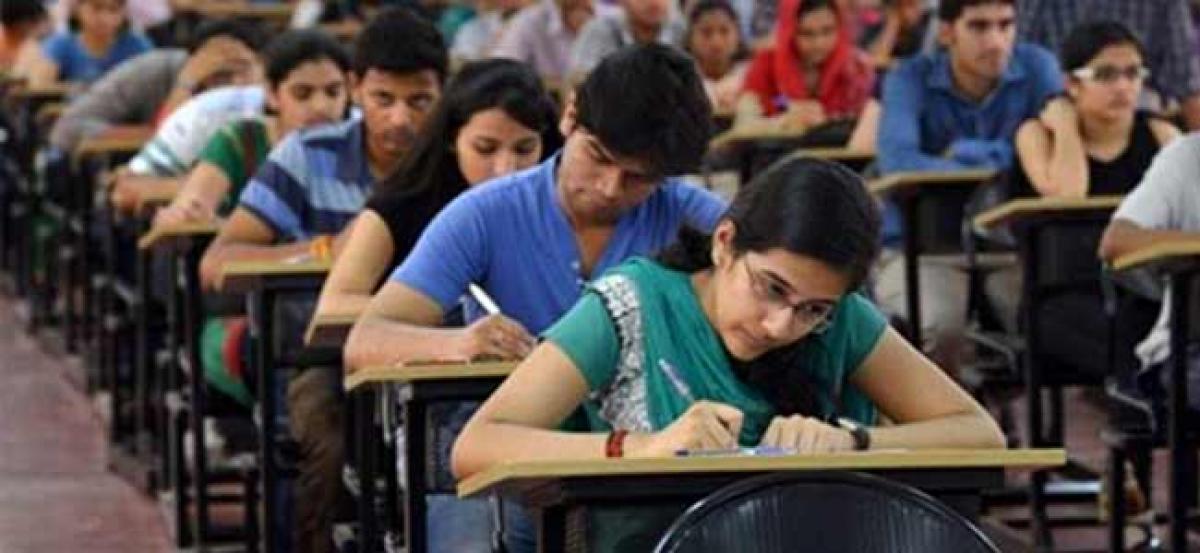Live
- Free coaching to be provided at BC Study Circles in 26 dists
- Previous TTD board looted pilgrims’ money, slams Bhanu
- Will order a detailed probe into TIDCO irregularities: Narayana
- Naidu all praise for Modi
- Indian students' concerns about employment, safety, and visas discourage them from applying to UK universities
- Candlelight Concerts Makes a Dazzling Debut in Hyderabad with Sold-Out 'Tribute to Coldplay' Show
- Shubman Gill Sustains Thumb Injury Ahead of Perth Test; Devdutt Padikkal Joins Test Squad
- Unlock Loot Boxes, Diamonds, Skins, and More Exciting Rewards with Garena Free Fire Max Redeem Codes for November 16
- Regarding the DOGE Plan, Vivek Ramaswamy stated, "Elon Musk and I Will Take a Chainsaw to Bureaucracy"
- Sudanese army says repulsed paramilitary forces attack in western Sudan, killing over 80
Just In

Candidate has to attempt FIVE questions in all
AGRICULTURE (PAPER—lI)
Time Allowed : Three Hours, Maximum Marks : 250
QUESTION PAPER SPECIFIC INSTRUCTIONS
(Please read each of the following instructions carefully before attempting questions)
There are EIGHT questions divided in two Sections and printed both in HINDI and in ENGLISH.
Candidate has to attempt FIVE questions in all.
Question Nos. 1 and 5 are compulsory and out of the remaining, THREE are to be attempted choosing at least ONE question from each Section.
The number of marks carried by a question/part is indicated against it.
Answers must be written in the medium authorized in the Admission Certificate which must be stated clearly cn the cover of this Question—cum-Answer (QCA) Booklet in the space provided. No marks will be given for answers written in medium other tha.n the authorized one.
Word limit in questions, wherever specified, should be adhered to.
Attempts of questions shall be counted in sequential order, Unless struck off, attempt of a question shall be counted even if attempted partly. Any page or portion of the page left blank in the Question-cum—Answer Booklet must be clearly struck off.
SECTION—A
Answer the following questions in about 150 words each: l0x5=50
1.
(a) What is cell? Enlist different organelles of plant cell with brief description of
functions of mitochondria.
(b) Give a brief account of conservation of crop genetic resources.
(C) What are the genetic and agronomic principles of seed production?
(d) What do you mean by male sterility? List various types of male sterility systems
found in plants and discuss the chemically induced male sterility.
(e) What is embryo rescue? Write its advantages in crop improvement. Indicate the technique
with special reference to interspecific and intergeneric hybridization.
2.
(a) Describe various steps involved in seed certification and the institutions associated
in the production of certified seeds. 20
(b) Describe the applications of molecular markers in crop improvement. 20
(c) Explain cytoplasmic inheritance and its characteristics. 10
3.
(a) Define heterosis. How is heterosis being exploited in the development of hybrids? 20
(b) What is polyploidy? Briefly discuss its application and limitations in crop improvement. 20
(c) Narrate the role of genetic engineering in crop improvement. 10
4.
(a) What are mutations? Indicate the use of induced mutation in varietal development. 20
(b) Explain the mechanism involved in breeding for resistance to insect-pests. 20
(c) Discuss the irnpact of PPV 8:. FRA in varietal protection of crop plants. 10
SECTION—B
Answer the following questions in about 150 words each: l0x5=5O
5.
(a) What are plant growth regulators? How do they differ from phytohormones?
Indicate the applications of plant growth regulators in agriculture.
(b) Describe the criteria of essentiality of nutrients. Classify the essential nutrients for plants.
Discuss the role of phosphorus and calcium in crops with special reference to pulses.
(c) Give a brief account of post-harvest losses in fruits. Suggest various management
techniques to avoid losses due to post-harvest diseases.
(d) What are nutrition challenges? Discuss the factors contributing to the under-nutrition
at different stages of life cycle.
(e) Define medicinal and aromatic plants. Discuss their importance and uses.
6.
(a) Define ‘evapotranspiration’. I-low is it affected by various factors? Briefly discuss
the passive absorption of water by plants. 20
(b) What is photophosphorylation? Distinguish between cyclic and non—cyclic
photophosphorylation. Give schematic structure of both the pathways. 20
(c) How does high-tech horticulture technology play role in enhancing resource
use efficiency and farmers’ income? 10
7.
(a) Give a brief account of major pests and diseases of mango with their
management measures. 20
(b) Suggest the measures to prevent the spread of exotic pests and diseases in the country. 20
(c) Differentiate between symbiotic and asymbiotic nitrogen fixation. How does
symbiotic nitrogen fixation take place in crop plants? 10
8.
(a) What are various ways of value addition in fruits and vegetables? 20
(b) What is protein energy malnutrition? Give micronutrient deficiency in
women and children. 20
(c) What is food security? Indicate the major constraints in food procurement
and distribution. 10

© 2024 Hyderabad Media House Limited/The Hans India. All rights reserved. Powered by hocalwire.com







